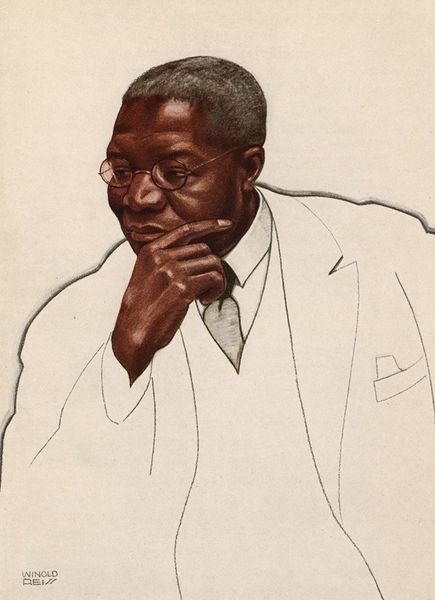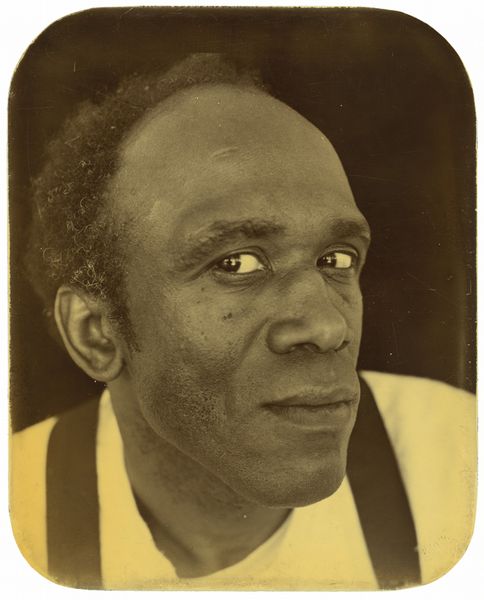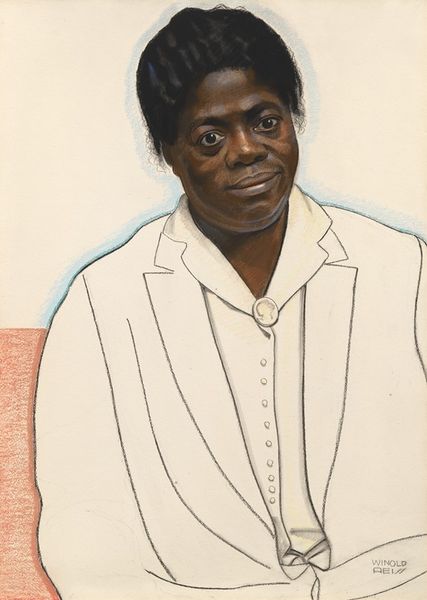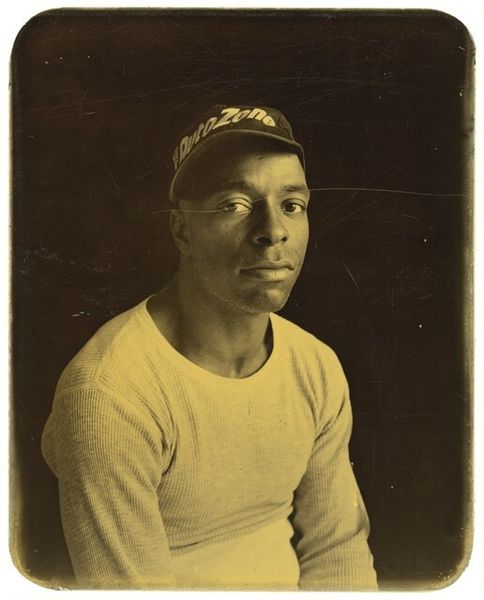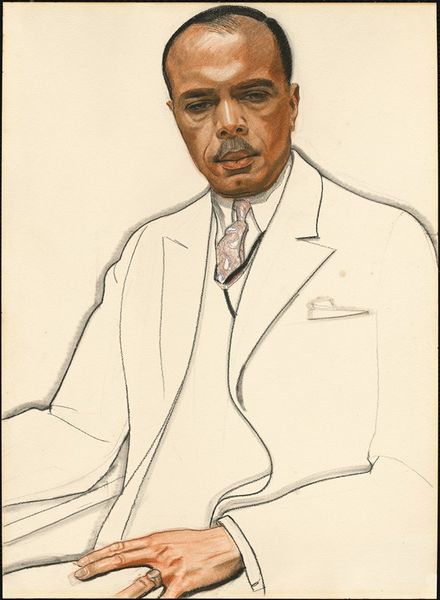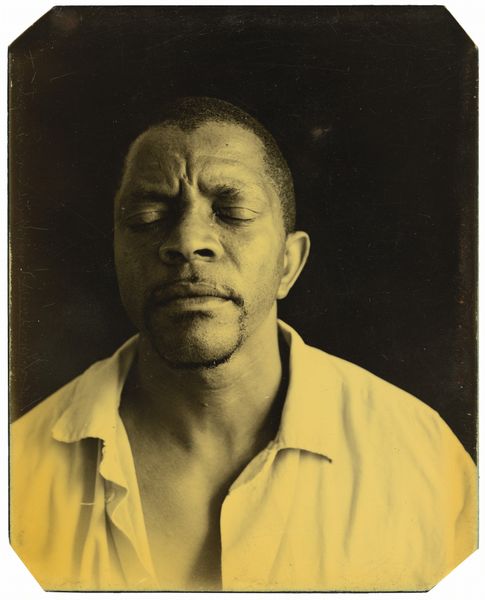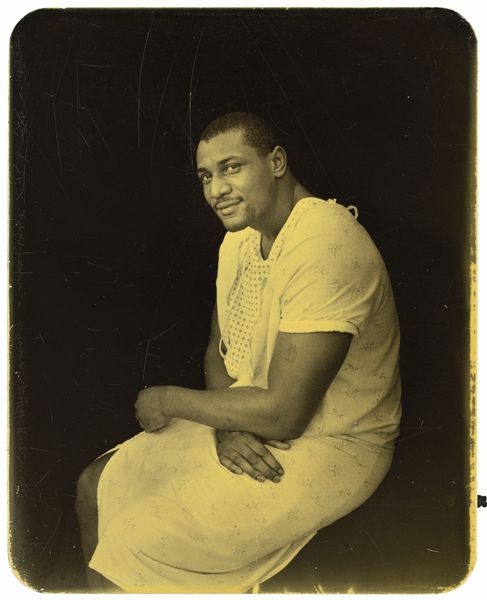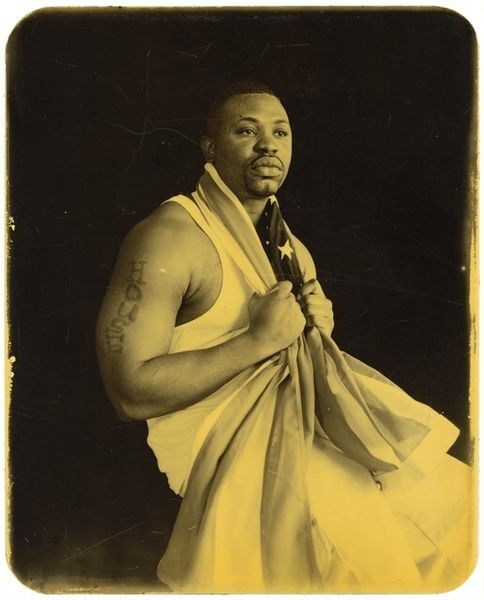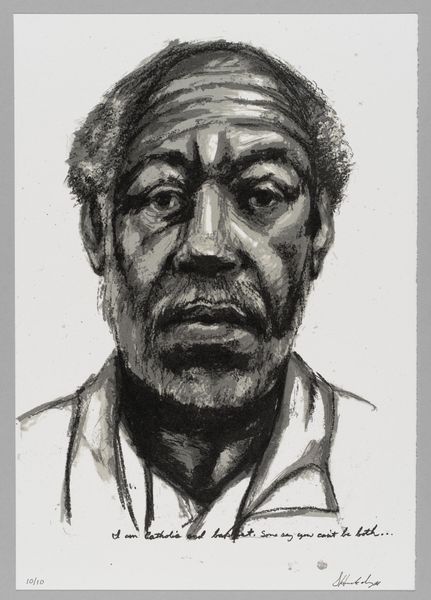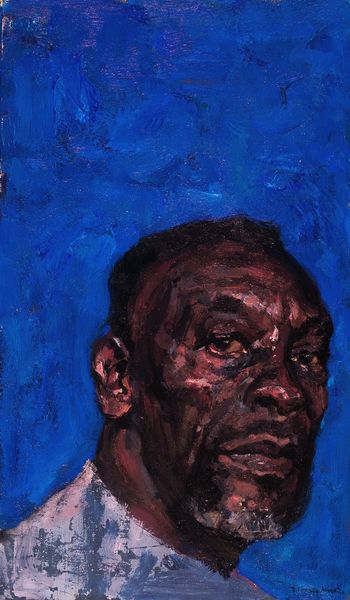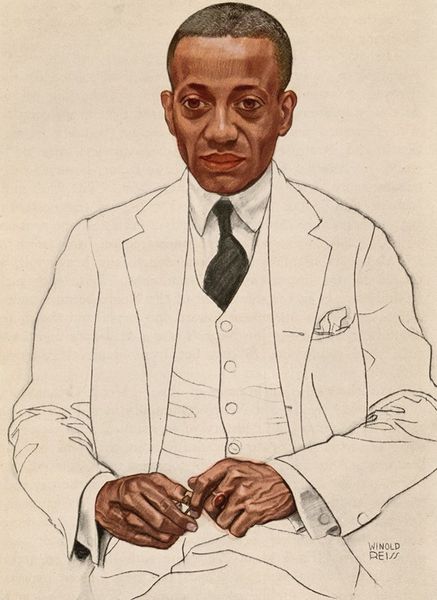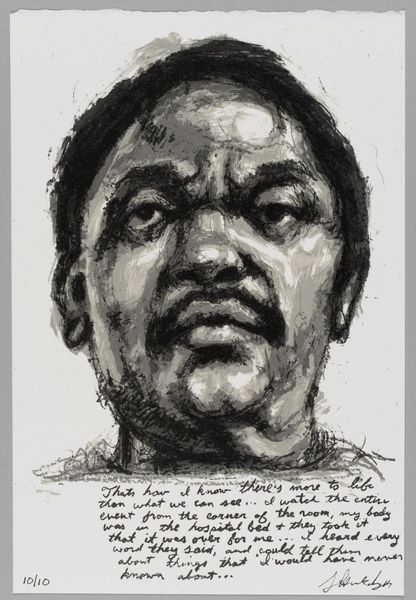
drawing, paper, pencil
#
portrait
#
drawing
#
figurative
#
facial expression drawing
#
low key portrait
#
portrait subject
#
harlem-renaissance
#
paper
#
portrait reference
#
pencil
#
portrait drawing
#
facial portrait
#
portrait art
#
fine art portrait
#
realism
#
celebrity portrait
#
digital portrait
Copyright: Public Domain: Artvee
Editor: This is Winold Reiss’s 1924 portrait of Paul Robeson, created with pencil and paper. The use of color on Robeson’s face contrasts strongly with the outlines used for the rest of the body. It’s striking and yet, also, subtle in how it portrays this man. How do you interpret this work in its time? Curator: The drawing is a really significant product of the Harlem Renaissance. Reiss sought to depict African Americans respectfully and realistically, pushing back against minstrel stereotypes deeply rooted in the American imagination. This portrait, in its visual restraint, claims dignity and interiority for its subject, something radically important during a period of intense racial prejudice and segregation. The style reflects the influence of German New Objectivity, which prioritized realism and psychological intensity. Editor: So, Reiss's choice to present Robeson in this style, it was making a statement, correct? Curator: Absolutely. Reiss was very conscious of the power of imagery and his art sought to challenge existing racial power structures. Who gets to represent whom, and how? Consider the museums and galleries, the art world gatekeepers: they were, and arguably still are, predominantly white spaces. So, what does it mean when a white artist represents a Black icon during this time? Do you think it is beneficial, or does it perpetuate issues? Editor: That's definitely something to consider. I hadn’t considered the complex power dynamics at play here. Curator: And remember that Robeson himself was a hugely influential figure, an actor, singer, and activist. Reiss's portrait freezes this powerful and impactful moment for African Americans within American history, influencing the reception of Black Americans by humanizing Paul Robeson, the icon. Editor: It is fascinating how much history and intention can be packed into one drawing. Thanks for providing this perspective. Curator: It has been great to delve into the layers behind the imagery with you. It's a powerful reminder of how art both reflects and shapes society.
Comments
No comments
Be the first to comment and join the conversation on the ultimate creative platform.
